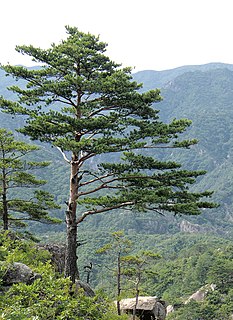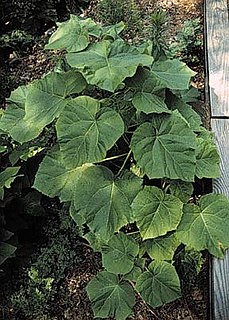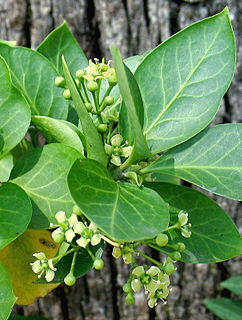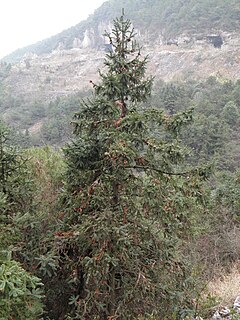
A carbon sink is any reservoir, natural or otherwise, that accumulates and stores some carbon-containing chemical compound for an indefinite period and thereby lowers the concentration of CO2 from the atmosphere. Globally, the two most important carbon sinks are vegetation and the ocean. Public awareness of the significance of CO2 sinks has grown since passage of the Kyoto Protocol, which promotes their use as a form of carbon offset. There are also different strategies used to enhance this process. Soil is an important carbon storage medium. Much of the organic carbon retained in agricultural areas has been depleted due to intensive farming. "Blue carbon" designates carbon that is fixed via the ocean ecosystems. Mangroves, salt marshes and seagrasses make up a majority of ocean plant life and store large quantities of carbon. Many efforts are being made to enhancing natural sequestration in soils and the oceans. In addition, a range of artificial sequestration initiatives are underway such as changed building construction materials, carbon capture and storage and geological sequestration.

A pine is any conifer in the genus Pinus of the family Pinaceae. Pinus is the sole genus in the subfamily Pinoideae. The Plant List compiled by the Royal Botanic Gardens, Kew and Missouri Botanical Garden accepts 126 species names of pines as current, together with 35 unresolved species and many more synonyms. Pine may also refer to the lumber derived from pine trees; pine is one of the more extensively used types of wood used as lumber.

Pseudotsuga is a genus of evergreen coniferous trees in the family Pinaceae.
A tree farm is a forest managed for timber production. The term, tree farm, also is used to refer to tree plantations, tree nurseries, and Christmas tree farms.

Pinus radiata, the Monterey pine, insignis pine or radiata pine, is a species of pine native to the Central Coast of California and Mexico. It is an evergreen conifer in the family Pinaceae.

Cryptomeria is a monotypic genus of conifer in the cypress family Cupressaceae, formerly belonging to the family Taxodiaceae. It includes only one species, Cryptomeria japonica. It used to be considered by some to be endemic to Japan, where it is known as Sugi. The tree is called Japanese cedar or Japanese redwood in English. It has been extensively introduced and cultivated for wood production on the Azores.

Paulownia tomentosa, common names princess tree, empress tree, or foxglove-tree, is a deciduous tree in the family Paulowniaceae, native to central and western China. It is an extremely fast-growing tree with seeds that disperse readily, and is a persistent exotic introduced species in North America, where it has undergone naturalisation in large areas of the Eastern US. P. tomentosa has also been introduced to Western and Central Europe, and is establishing itself as a naturalised species there as well.

Paulownia is a genus of seven to 17 species of C4 flowering plants in the family Paulowniaceae, in the order Lamiales. They are present in much of China, south to northern Laos and Vietnam and are long cultivated elsewhere in eastern Asia, notably in Japan and Korea where they are native.

Paulowniaceae are a family of flowering plants within the Lamiales. They are a monophyletic and monogeneric family of trees with currently 7 confirmed species. They were formerly placed within Scrophulariaceae sensu lato, or as a segregate of the Bignoniaceae.

Trachycarpus is a genus of eleven species of palms native to Asia, from the Himalaya east to eastern China. They are fan palms, with the leaves with a bare petiole terminating in a rounded fan of numerous leaflets. The leaf bases produce persistent fibres that often give the trunk a characteristic hairy appearance. All species are dioecious, with male and female flowers produced on separate plants although female plants will sometimes produce male flowers, allowing occasional self-pollination.

Trachycarpus fortunei, the Chinese windmill palm, windmill palm or Chusan palm, is a species of hardy evergreen palm tree in the family Arecaceae, native to parts of China, Japan, Myanmar and India.

Hosta is a genus of plants commonly known as hostas, plantain lilies and occasionally by the Japanese name gibōshi. Hostas are widely cultivated as shade-tolerant foliage plants. The genus is currently placed in the family Asparagaceae, subfamily Agavoideae, and is native to northeast Asia. Like many "lilioid monocots", the genus was once classified in the Liliaceae. The genus was named by Austrian botanist Leopold Trattinnick in 1812, in honor of the Austrian botanist Nicholas Thomas Host. In 1817, the generic name Funkia was used by German botanist Kurt Sprengel in honor of Heinrich Christian Funck, a collector of ferns and alpines; this was later used as a common name and can be found in some older literature.

The mountain pine beetle is a species of bark beetle native to the forests of western North America from Mexico to central British Columbia. It has a hard black exoskeleton, and measures approximately 5 millimetres, about the size of a grain of rice.

Euonymus fortunei, the spindle, Fortune's spindle, winter creeper or wintercreeper, is a species of flowering plant in the family Celastraceae, native to east Asia, including China, Korea, the Philippines and Japan. It is named after the Scottish botanist and plant explorer Robert Fortune. Euonymus is highly invasive and damaging in the United States, causing the death of trees and forest in urban areas.

Aglaomorpha fortunei, commonly known as gu-sui-bu, is a species of basket fern of the family Polypodiaceae. The plant is native to Eastern Asia, including eastern China.

Vachellia xanthophloea is a tree in the family Fabaceae, commonly known in English as the fever tree. This species of Vachellia is native to eastern and southern Africa. It has also become a landscape tree in other warm climates, outside of its natural range.

Paulownia elongata is a species of tree in the family Paulowniaceae, native to Asia.

Xu Garden, also called Xihuayuan is a classical Chinese garden in Xuanwu District, Nanjing, Jiangsu, China. It is located on the west side of the Presidential Palace in Nanjing. It is also one of two prominent gardens in Nanjing alongside the Zhan Garden.

Cunninghamia lanceolata is a species of tree in the cypress family, Cupressaceae. It is native to south-central and southeast China. Ornamentally C. lanceolata is commonly planted as a specimen tree in temperate zones.

Rhododendron discolor (喇叭杜鹃) is a rhododendron species native to many regions of China, where it grows at altitudes of 900–1,900 m (3,000–6,200 ft). It is a shrub or small tree that grows to 1.5–8 m (4.9–26.2 ft) in height, with leathery leaves that are oblong-elliptic or oblong-lanceolate, and 9.5–18 × 2.4–5.4 cm in size. The flowers are pale pink to white. According to Flora of China, "Rhododendron discolor intergrades with R. fortunei, and can reliably be separated from that species only by the proportionately narrower leaves."

















